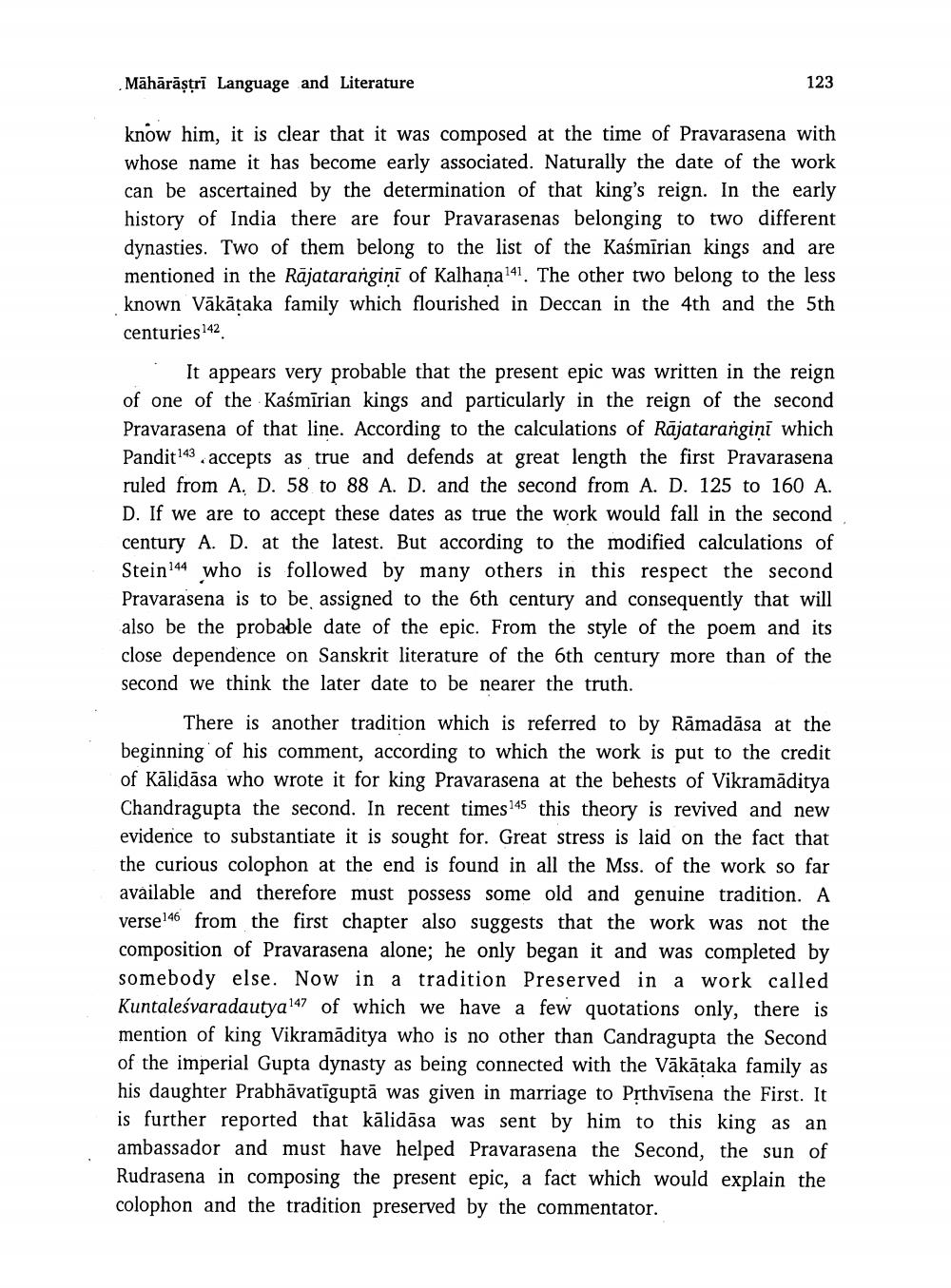________________
Māhārāștri Language and Literature
123
know him, it is clear that it was composed at the time of Pravarasena with whose name it has become early associated. Naturally the date of the work can be ascertained by the determination of that king's reign. In the early history of India there are four Pravarasenas belonging to two different dynasties. Two of them belong to the list of the Kaśmīrian kings and are mentioned in the Rajatarangini of Kalhana141. The other two belong to the less known Vākātaka family which flourished in Deccan in the 4th and the 5th centuries 142
It appears very probable that the present epic was written in the reign of one of the Kaśmīrian kings and particularly in the reign of the second Pravarasena of that line. According to the calculations of Rājatarangini which Pandit 143 accepts as true and defends at great length the first Pravarasena ruled from A. D. 58 to 88 A. D. and the second from A. D. 125 to 160 A. D. If we are to accept these dates as true the work would fall in the second century A. D. at the latest. But according to the modified calculations of Stein 144 who is followed by many others in this respect the second Pravarasena is to be assigned to the 6th century and consequently that will also be the probable date of the epic. From the style of the poem and its close dependence on Sanskrit literature of the 6th century more than of the second we think the later date to be nearer the truth.
There is another tradition which is referred to by Rāmadāsa at the beginning of his comment, according to which the work is put to the credit of Kālidāsa who wrote it for king Pravarasena at the behests of Vikramāditya Chandragupta the second. In recent times 145 this theory is revived and new evidence to substantiate it is sought for. Great stress is laid on the fact that the curious colophon at the end is found in all the Mss. of the work so far available and therefore must possess some old and genuine tradition. A verse]46 from the first chapter also suggests that the work was not the composition of Pravarasena alone; he only began it and was completed by somebody else. Now in a tradition Preserved in a work called Kuntalesvaradautya 147 of which we have a few quotations only, there is mention of king Vikramāditya who is no other than Candragupta the Second of the imperial Gupta dynasty as being connected with the Vākātaka family as his daughter Prabhāvatīguptā was given in marriage to Prthvīsena the First. It is further reported that kālidāsa was sent by him to this king as an ambassador and must have helped Pravarasena the Second, the sun of Rudrasena in composing the present epic, a fact which would explain the colophon and the tradition preserved by the commentator.




